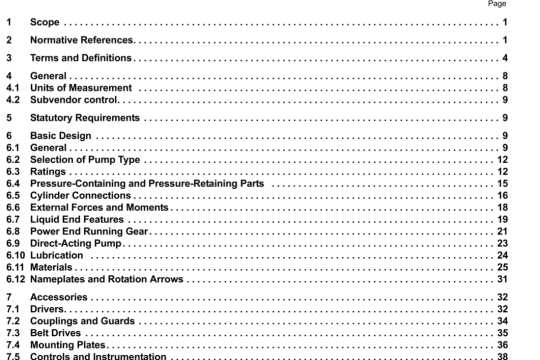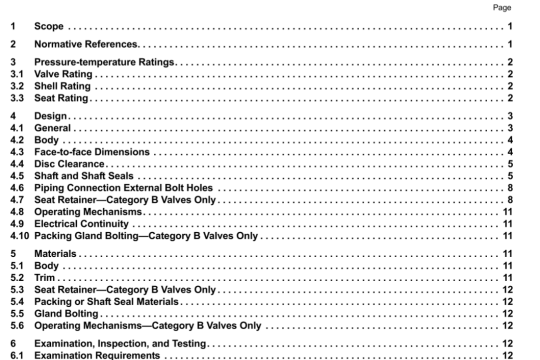API RP 51R:2009 pdf download
API RP 51R:2009 pdf download.Environmental Protection forOnshore Oil and Gas Production Operations and Leases.
The placement of pipelines should avoid steep hillsides and watercourses where feasible. Also, where feasible, pipeline routes should take advantage of road corridors to minimize surface disturbance. Also, when clearing is necessary, the width disturbed should be kept to a minimum and topsoil material should be stockpiled to the side of the routes where cuts and fills or other disturbances occur dunng pipeline construction. Retaining topsoil for replacement during reclamation can significantly accelerate successful revegetation.
7.2 Route Selection
7.2.1 The following environmental factors should be considered in planning lease gathering and system lines.
a) Proximity to lakes, streams (including dry washes and ephemeral streams), wetlands, drainage and irrigation ditches, canals, flood plains, and shallow water wells. These features should be evaluated in terms of disturbances during construction and routine operations, and in the event of accidental releases.
b) Depth to, and quality of, groundwater. The potential impact to groundwater, particularly from any releases from buried lines should be considered.
c) Removal of trees, disturbances to dikes, levees, and terraces, and destruction of growing crops. These impacts should be evaluated with a focus on construction and routine maintenance activities.
d) Impacts to migratory bird habitat or critical habitat of threatened or endangered plant and animal species, including noise and dust.
e) Proximity to buildings or other facilities occupied or used by the public. Particular consideration should be given to homes, churches, schools, and hospitals.
f) Impact on cultivated lands.
g) Areas of special historical, archeological, recreational, biological, or scenic significance.
h) Land ownership.
i) Location of recently active shallow faults.
7.2.2 The selection of routing for lease gathering and EOR injection and produced water disposal system lines, consistent with production, EOR and disposal requirements and overall economics, should consider the following:
a) foreseeable uses of surfaces areas by either the landowner or tenant;
b) possible exposure to future construction and excavation work;
c) topography, when it is an important factor in:
1) line design,
2) right-of-way maintenance,
3) possible land erosion,
4) emergency response and containment of releases:
d) location of existing rights-of-way;
e) location of existing roads.
7.3 Design
7.3.1 In design of lease gathering and system lines, appropriate industry codes should be followed.
7.3.2 Lease gathering and system line design should consider the following.
a) Estimated life of the line.
b) Line environment (nature of the soil, presence of water-saturated soil, alkaline flats, depth of frost, etc.).
c) Nature and quantity of product throughput, initially and as production matures, including the potential for EOR processes.
d) Impacts on existing facilities.
e) Consequences of possible line failure. Release of oil, water, or gas should be qualitatively evaluated. Consideration should be given to installing block valves to isolate line segments located in or near environmentally sensitive areas (such as wetlands), on either side of stream crossings, and in close proximity to areas occupied by the public. Consideration should also be given to sleeving lines or using heavier walled pipe in these areas.
The qualitative evaluation should consider the following:
1) public impact,
2) environmental impact (including potential natural resource damage assessment liability),
3) damage to crops and domesticated animals,
4) cleanup costs,
5) political or regulatory impacts.
1) Corrosion inhibition measures (external and internal). All equipment should be manufactured from materials which are suitable for their operating environment. NACE MR 0175 should be consulted for further guidance, as applicable.
g) Burial to optimum depth to reduce exposure to hazards such as plowing, freezing, and other construction.
h) Provisions for various crossings (roads, streams, and other lines).
i) Optimum location for blowdown tanks, valves, etc.
j) Noise abatement (where appropriate).
k) Miscellaneous variable factors including operating pressures, temperature changes, line expansion, and desired safety factors.




